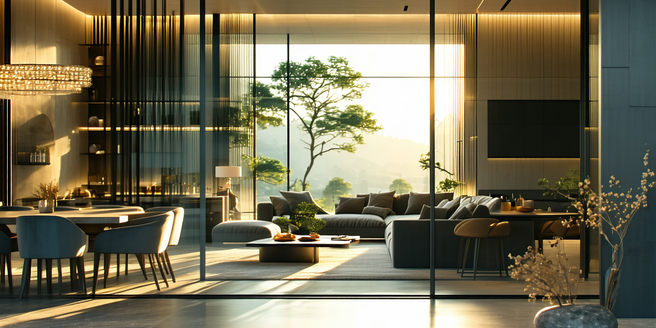Flex Housing Alternatives

Understanding Flex Housing: The Basics
Flex housing refers to residential units designed for adaptability and versatility to accommodate the changing needs of occupants over time. These dwellings can modify their layout or functions based on different life stages, such as growing families, seniors, or individuals with disabilities. By incorporating movable walls, universal design principles, and multi-functional spaces, flex housing aims to optimize living conditions. The concept emerged as a response to the evolving demographic, economic, and social landscapes. As urban areas face rising population pressures and space limitations, flex housing emerges as a practical solution to address the demand for functional and sustainable living environments. This housing model not only supports diverse lifestyle requirements but also fosters community integration by promoting inclusive and accessible designs. Understanding these fundamentals is crucial as flex housing shapes the future of residential architecture.
Benefits of Flex Housing Solutions
Flex housing solutions offer numerous benefits that address the modern challenges faced by urban dwellers. One significant advantage is their adaptability, allowing homeowners to make cost-effective modifications without moving. This flexibility supports evolving lifestyles, such as transitioning from single living to family life, or accommodating aging-in-place strategies. Additionally, flex housing promotes efficient use of space through smart design elements, which can lead to reductions in energy consumption and utility costs. By incorporating sustainable practices, these solutions contribute to environmental conservation efforts. They also enhance property value, as adaptable homes are attractive to a broader range of buyers. The social integration facilitated by accessible designs fosters stronger communities. Overall, flex housing is a forward-thinking approach that aligns with the shift towards sustainable urban living, offering a harmonious blend of economic, environmental, and social benefits.
Types of Flex Housing Models
Flex housing encompasses a variety of innovative models that are distinguished by their design principles and adaptability. One popular model is the modular home, which features prefabricated sections that can be reconfigured or expanded as needed. Another option is the open-plan layout, where movable partitions and adaptable spaces offer personalized configurations. Cohousing communities also fall under the flex housing umbrella, providing shared amenities while allowing for private living spaces. Some designs incorporate accessory dwelling units (ADUs) that serve as additional living quarters for family members or rental purposes. These models not only cater to diverse lifestyle needs but also respond to urban density challenges by maximizing space efficiency. Each type of flex housing model presents unique opportunities to create resilient and future-proof living environments, encouraging sustainability and inclusivity in residential design.
Sustainable Materials in Flex Housing
In the pursuit of environmentally responsible housing, the use of sustainable materials in flex housing is pivotal. These materials enhance the eco-friendliness and energy efficiency of adaptable homes. Bamboo, for instance, is favored for its rapid renewability and durability as a construction material. Reclaimed wood and recycled steel are also integral to sustainable building practices, reducing environmental impact through resource conservation. Insulation made from recycled denim or wool contributes to energy efficiency, maintaining optimal indoor temperatures year-round. The incorporation of low-VOC paints and finishes improves indoor air quality, promoting a healthier living environment. By selecting sustainable materials, flex housing projects minimize carbon footprints and support the transition to green construction practices. This approach not only benefits the environment but also aligns with growing consumer demand for sustainable living options, reinforcing the importance of responsible material selection.
Case Studies: Successful Flex Housing Projects
Exploring successful flex housing projects provides valuable insights into the practical application of adaptive design principles. One notable example is the West End Yard community, where modular units provide versatile living spaces for various household sizes. Another exemplary project is the Grow Home in Montreal, which showcases expandable living through structural flexibility and affordability. The NEST project in Switzerland exemplifies innovative use of shared spaces and resources, fostering community-centric living. In Australia, the Nightingale Housing initiative focuses on sustainability and affordability by using environmentally friendly materials and energy-efficient systems. These case studies highlight the diverse approaches to implementing flex housing solutions, demonstrating their capacity to address housing shortages, enhance community integration, and promote sustainable living practices. By learning from these successes, future developments can be informed and inspired to pursue effective and inclusive housing designs.
Future Trends in Flex Housing Design
Looking ahead, the future of flex housing design is poised to embrace technological advancements and societal shifts. The integration of smart home technology is set to become a staple, providing enhanced adaptability and energy management. Augmented reality and virtual reality will likely be employed in the design and customization of spaces, offering residents tailored solutions. There’s an anticipated evolution towards eco-conscious designs, with a stronger emphasis on renewable energy sources such as solar and wind. The rise of biophilic design elements will connect inhabitants with nature, promoting wellness. As urbanization intensifies, solutions that make the most out of limited space will become more prevalent, with vertical expansions and multi-use areas. Flex housing is expected to continue evolving, meeting the demands of an increasingly dynamic world and setting new standards for sustainable and adaptable living environments.